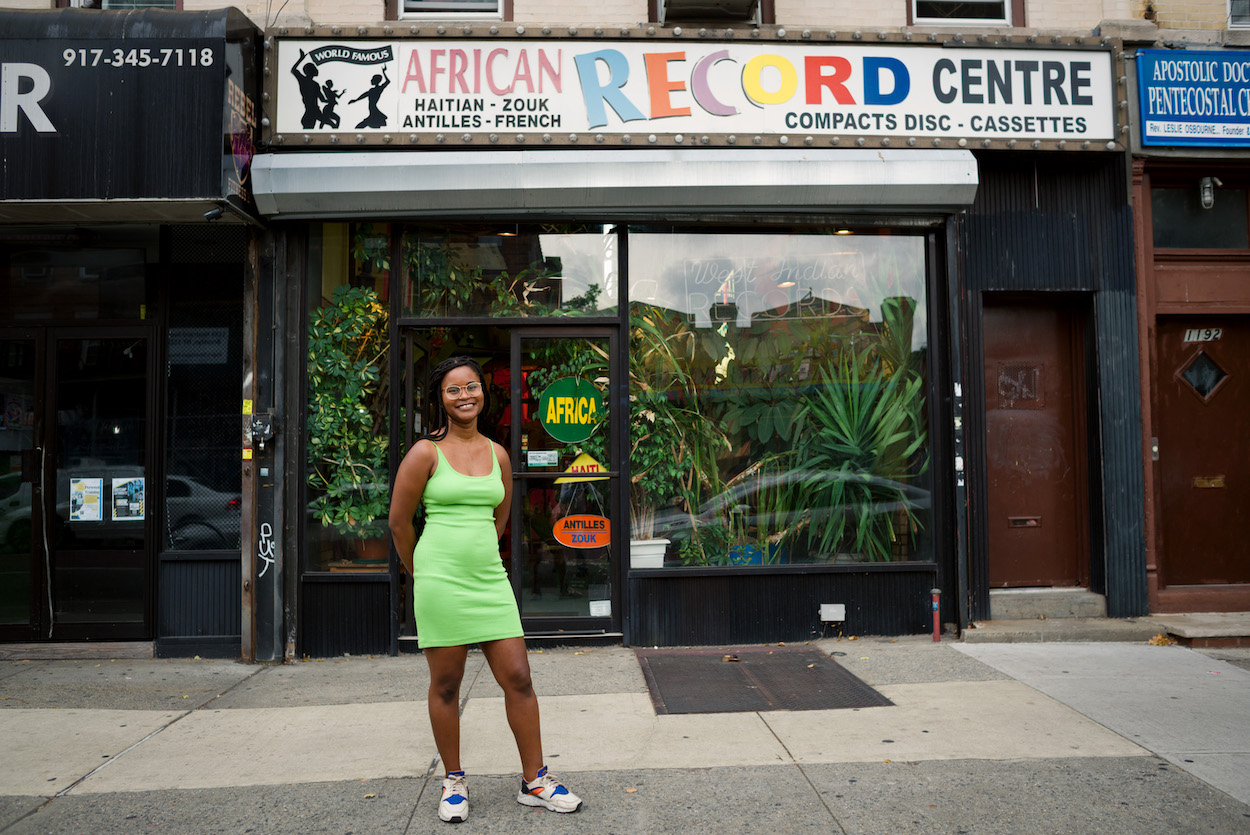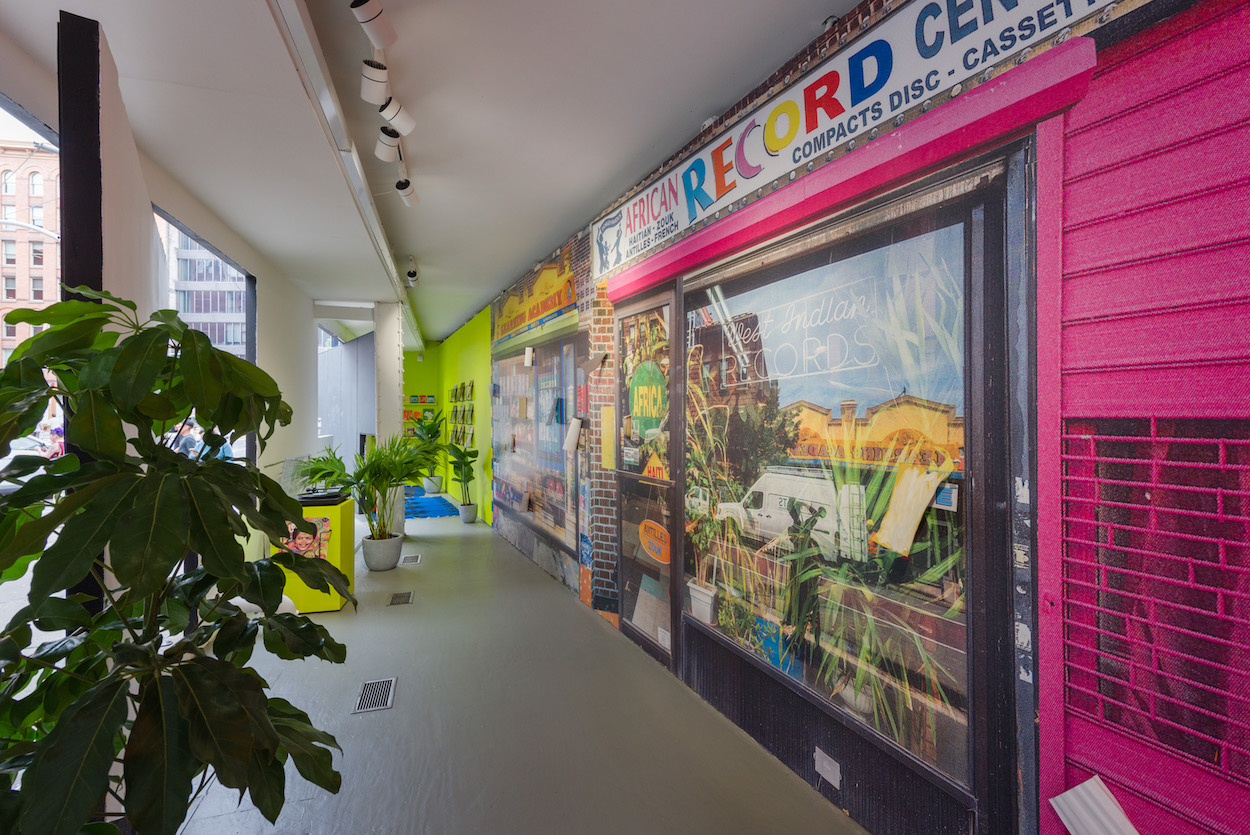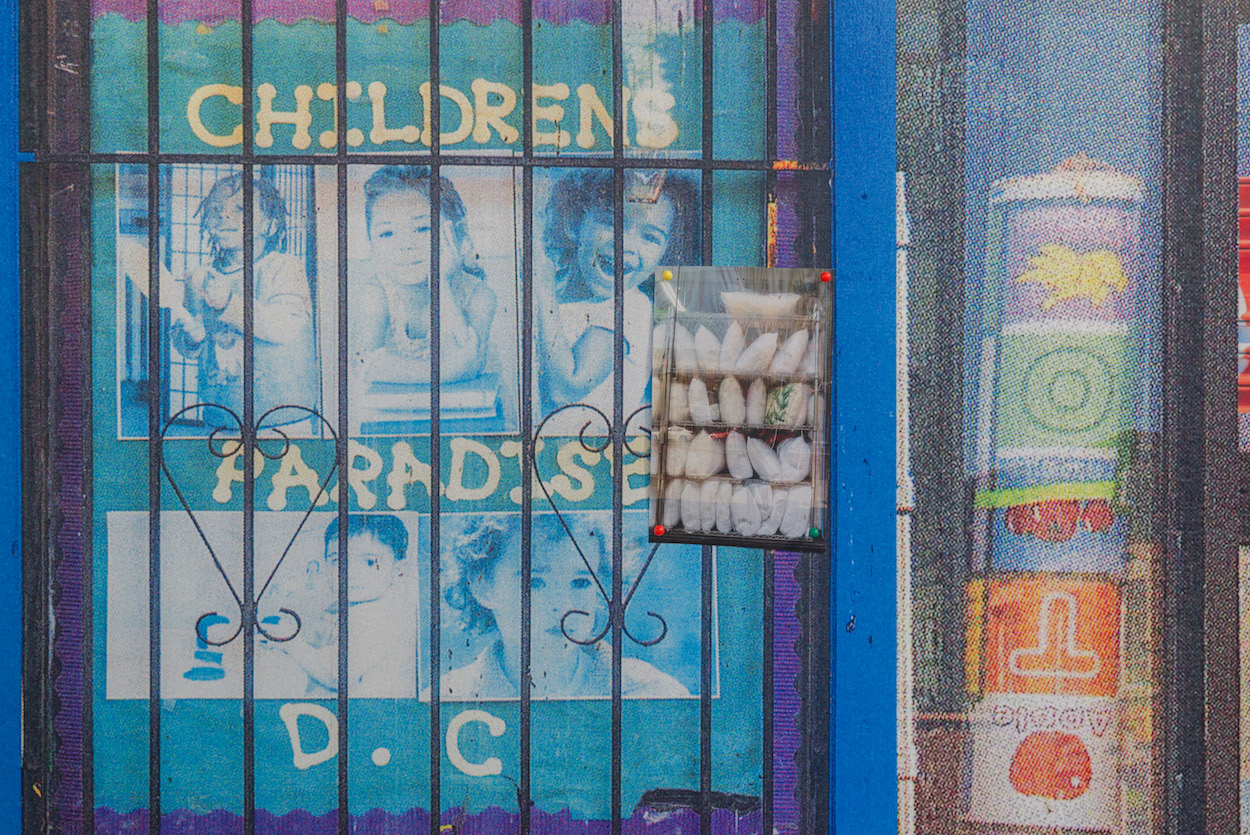“It’s been really, really busy,” Ilana Harris-Babou says of her season. The interdisciplinary artist has spent some of each fall week at Wesleyan University, teaching classes in time-based media, and the rest in her native Brooklyn, caring for her mother and preparing a pair of provocative shows in Manhattan. The first—“Under My Feet,” a layered installation that recontextualizes the street-level environments of the neighborhoods she grew up in—takes over the Storefront for Art and Architecture, while “Needy Machines,” powers up Candice Madey with sly observations about wellness marketing.
In an edited and condensed conversation, Harris-Babou spoke with Surface about persistence, playfulness, and the messy importance of being in your body.
How did you begin thinking through what would become “Under My Feet?”
Storefront wanted to have artists doing work about the ground-level, or streetscape, business of New York City. I thought the streetscape of my childhood in central Brooklyn would be a great place to start. What became exciting to me, when thinking about memory and place, was about how when folks, especially in the art world, say: “Oh, you’re from Crown Heights, you must have seen how much it changed.” Of course I did, but I also see the amazing people who stayed. Most people there still are Black. I see intergenerational persistence, and the conversations that have continued, and the spaces of love and learning that persist.
You include educational spaces, including a video about Brooklyn’s Lefferts Gardens Montessori school—what was important about mixing those into retail vernaculars?
I went to the Maple Street School, which was in a storefront space on Nostrand Avenue. I went on an exploration of learning spaces from my childhood, and those have been in the neighborhood for 40-plus years. I had beautiful conversations, especially talking to Meryl Thompson, the daughter of the founder of Lefferts Gardens Montessori. I realized the story in her own words would be most interesting to share, so that’s why the interview is there directly.
Retail figures into it as well, not just in terms of bodegas, but also cultural institutions like the African Record Centre.
Their collection is so beautiful. I admire the work they’ve done in the space of analog collecting. The books and records they have kind of speak for themselves.
How did you negotiate making space for all this at Storefront?
I was thinking about the dark exterior and how the space within could be an assertion of color, variation, and sound. My memories are the bright colors of facades in the summer—and how a neighborhood becomes less colorful with gentrification. I also thought about play, like how a child moves through a city and how it differs from ideas one might have about a flaneur, or something like that.
There’s the play of engaging with surfaces and spaces outside of direct narratives we have around utility. But I wanted to create an environment that gives cues to a person that you can sit down and play around and go into that headspace. At the opening, it was nice to see how it spoke to my target audience: kids came up to the door and asked if they could come in, and sat on the carpet and started playing with the toys. It’s not sitting and passively absorbing a video. It’s something where you wriggle around and be in your body in a different way.
Then you have a very different show opening in a few weeks.
I make a lot of work about gentrification and how luxury design frames spaces. But [this show] uses the language of high-end design as a direct foil to the messiness of human experience. It’s about an interior sort of adult space, and the messiness of being in a body. I’ve made these videos that take place in smart mirrors. I’ve made these luxury exercise mirrors into medicine cabinets that play videos you can see your face in. I’ve ruptured trendy surfaces like penny tile with amorphous food waste and human traces and swipes. It’s been a gift to explore two different sides or trains of thoughts in my practice simultaneously.
“Ilana Harris-Babou: Under My Feet” will be open at Storefront for Art and Architecture until Dec. 16.



